Apple directly compared the graphical capabilities of the 16-inch MacBook Pro against the MSI GE76 Raider gaming notebook at its launch. Here's how it fares against the rest of the notebook's specifications.
Apple's launch of its M1 Pro and M1 Max chips, as used in the 14-inch MacBook Pro and 16-inch MacBook Pro, involved a lot of comparisons against other notebooks on the market. One such comparison was against the MSI GE76 Raider, model number 11UH-053, used to gather "High-end discrete PC laptop graphics performance data."
While Apple used the discrete GPU as a point of comparison against its latest notebook, MSI's notebook is not just defined by what GPU it uses. It's worth looking at the rest of the specifications list to see how MSI's gaming notebook stands up against Apple's latest creation.
Specifications
| Â | 16-inch MacBook Pro (2021) | MSI GE76 Raider |
|---|---|---|
| Display Size (inches) | 16.2 | 17.3 |
| Max Resolution | 3,456 x 2,234 | 1920 x 1080 |
| Pixel Density | 254 | 127 |
| Brightness | 1000 nits | Around 300 nits |
| Display Technology | Mini LED-Backlit, Wide Color (P3), True Tone ProMotion | IPS LCD-backlit, 360Hz 3ms |
| Processors | 10-core M1 Pro, 10-core M1 Max | Intel Core i9-11980HK |
| Memory | 16GB Unified Memory, Configurable to 64GB | 32GB 3200MHz DDR4, Support for 64GB |
| Graphics | M1 Pro 16-core, M1 Max 24-core M1 Max 32-core | Intel UHD Graphics, Nvidia GeForce RTX 3080 16GB GDDR6 |
| Storage | 512GB, 1TB, 2TB, 4TB, 8TB | 1TB, 2 x M.2 slots |
| Biometrics | Touch ID | None |
| Trackpad | Force Touch | Yes |
| Keyboard | Backlit with ambient light sensor | Steel Series per-key RGB Anti-Ghost technology |
| Dimensions (inches) | 14.01 x 9.77 x 0.66 | 15.63 x 10.57 x 1.08 |
| Weight (pounds) | 4.7 (M1 Pro), 4.8 (M1 Max) | 6.39 |
| Battery | 100WHr | 99.9Whr |
| Ports | 3 Thunderbolt 4 ports, HDMI, SDXC card slot, MagSafe 3, Headphone jack | 1 Thunderbolt 4 port, 1 USB 3.2 Gen 2 Type-C, 1 USB 3.2 Gen 2 Type-A, 2 USB 3.2 Gen 1 Type-A, HDMI, mini DisplayPort 1.4, SDXC card slot, Gigabit Ethernet, Headphone jack |
| Webcam | 1080p FaceTime HD | 1080p |
| Speakers | Six speakers with force-cancelling woofers, Dolby Atmos | 2x 2W with subwoofer |
| Microphones | 3 with directional beamforming | 1 |
| Networking | Wi-Fi 6 | Wi-Fi 6E |
| Bluetooth | 5.0 | 5.2 |
| Power Supply | 140W | 280W |
| Color Options | Silver, Space Gray | Titanium Blue |
| Price | from $2,499 | $3,399 |
16-inch MacBook Pro vs MSI GE76 Raider - Physical Dimensions
Housed in aluminum, the MacBook Pro is offered in Apple's standard color options of Silver and Space Gray. With rounded corners and straight lines, Apple has walked the line between minimalism and utility, complete with its well-trodden design language that's instantly recognizable to anyone else.
Gaming notebooks typically have a bombastic aesthetic to make it different from run-of-the-mill notebooks, and MSI has undoubtedly used the same playbook with the GE76 Raider. Made from plastic and aluminum in Titanium Blue, the notebook has large vents, various frills in the design, and a long RGB light bar below the keyboard.
Of the two, the Raider is physically larger, with a footprint of 15.63 by 10.57 inches versus 14.01 by 9.77 inches for the 16-inch MacBook Pro. This size difference could easily be explained by MSI's use of a larger display and other more minor design considerations.
It doesn't explain the difference in thickness, as while Apple opts for a slim 0.66 inches, MSI goes for 1.08 inches, almost double the size. The extra thickness, along with the significant use of vents, could help cool the unit down during periods of high load, but it's a little too thick.
The size difference equates to a variance in weight, with the MacBook Pro at 4.7 pounds or 4.8 pounds, depending on if you configure it with the M1 Pro or M1 Max. The Raider tips the scales at a hefty 6.39 pounds.
Suffice to say, you could probably consider the Raider as a so-called desktop replacement, as the weight and dimensions don't point to it being a highly portable device.
16-inch MacBook Pro vs MSI GE76 Raider - Display
As said previously, Apple does have a smaller display using a 16.2-inch screen, while MSI goes for a 17.3-inch version.
While bigger, MSI's display in this particular specification is lower-resolution at 1080p, giving it a pixel density of 127ppi. This pales compared to the 16-inch MacBook Pro's 3,456 by 2,234 resolution and 254ppi pixel density.
The scale continues to tip in Apple's favor with its support for Wide Color P3, True Tone, and its use of mini LED backlighting. This gives it a high brightness of 1,000 nits of full-screen brightness, 1,600 at peak, and a 1,000,000:1 contrast ratio.
MSI's use of conventional LED results in a lower brightness display at around 300 nits for its IPS panel. Arguably, Apple could've chosen other models with a UHD-resolution screen, but as its interests lay in graphical performance, it wasn't a factor to the company.
The two do differ when it comes to the refresh rate. Apple uses ProMotion, allowing the MacBook Pro to refresh at up to 120Hz, adapting the rate depending on the content shown on the display.
MSI offers a maximum refresh rate of 360Hz, three times higher than the MacBook Pro's maximum, though it isn't adaptive to content. The refresh rate has to be set up, instead.
One other noteworthy element is that Apple has extremely thin bezels around its display, which necessitated the inclusion of the notch at the top of the screen to house the webcam. MSI doesn't use a notch, instead opting for a bezel thick enough to fit in the webcam.
16-inch MacBook Pro vs MSI GE76 Raider - CPU Performance
The 16-inch MacBook Pro has a choice of two CPU options, consisting of the M1 Pro and M1 Max. Both use identical 10-core setups with two efficiency cores and eight high-performance cores and are broadly similar in many respects.
The differences start with the M1 Max having a higher memory bandwidth of 400GB/s versus 200MB/s for the M1 Pro. Memory options for the M1 Pro start at 16GB with a 32GB upgrade available, while the M1 Max begins at 32GB and goes up to 64GB.
Both also have the Media Engine, which handles video encoding and decoding for H.264, HEVC, ProRes, and ProRes RAW content. The M1 Max increases the video encode engine count to two versus 1 in the Pro and doubles the ProRes encode and decode engines to two apiece.
There's also the 16-core Neural Engine, which will assist with tasks better suited to machine learning.
The Raider is configured with an Intel Core i9-11980HK processor, a Q2 2021 11th-generation chip made using 10nm lithography. The 8-core 16-thread chip has a base clock speed of 2.6Ghz, rising to 5Ghz under Turbo Boost.
On the memory side, it has 16GB of DDR4 3,200MHz RAM, though this could be upgraded to 64GB at maximum capacity.
In AppleInsider's testing of a 16-inch MacBook Pro with the M1 Max against the Raider's processor, we repeatedly found that there was a difference in performance for the Intel-based notebook, depending on whether it was running off the battery or if an outlet was powering it. This is likely to conserve battery life at the expense of performance.
Meanwhile, the MacBook Pro offered the same performance while on battery or under power, even under multiple tests. For the purposes of comparison, only one score is being reported for the MacBook Pro.
In Geekbench 5, the Raider manages single-core scores of 1,672 and 1,554 while being recharged and on battery respectively, meanwhile the M1 Max manages 1,769.
In the multi-core test, the MacBook Pro managed 12,308 points. Meanwhile, the Raider reached 6,952 on battery and a better 10,140 when fully powered. This certainly shows that while on the move, the MacBook Pro will be the better performing model when there's no outlet around.
Things do change a bit when you look at the results for Cinebench R23. Again, the race is quite close in the single-core test, with the MacBook Pro managing 1,532, but the Raider takes a narrow lead with 1,553 on battery, 1,620 at an outlet.
With Cinebench's multi-core test, again, you see a drop in performance when using the battery with the Raider, with it managing 6,205 points. While powered by an outlet, the score rises to 12,631, slightly ahead of the MacBook Pro's 12,308.
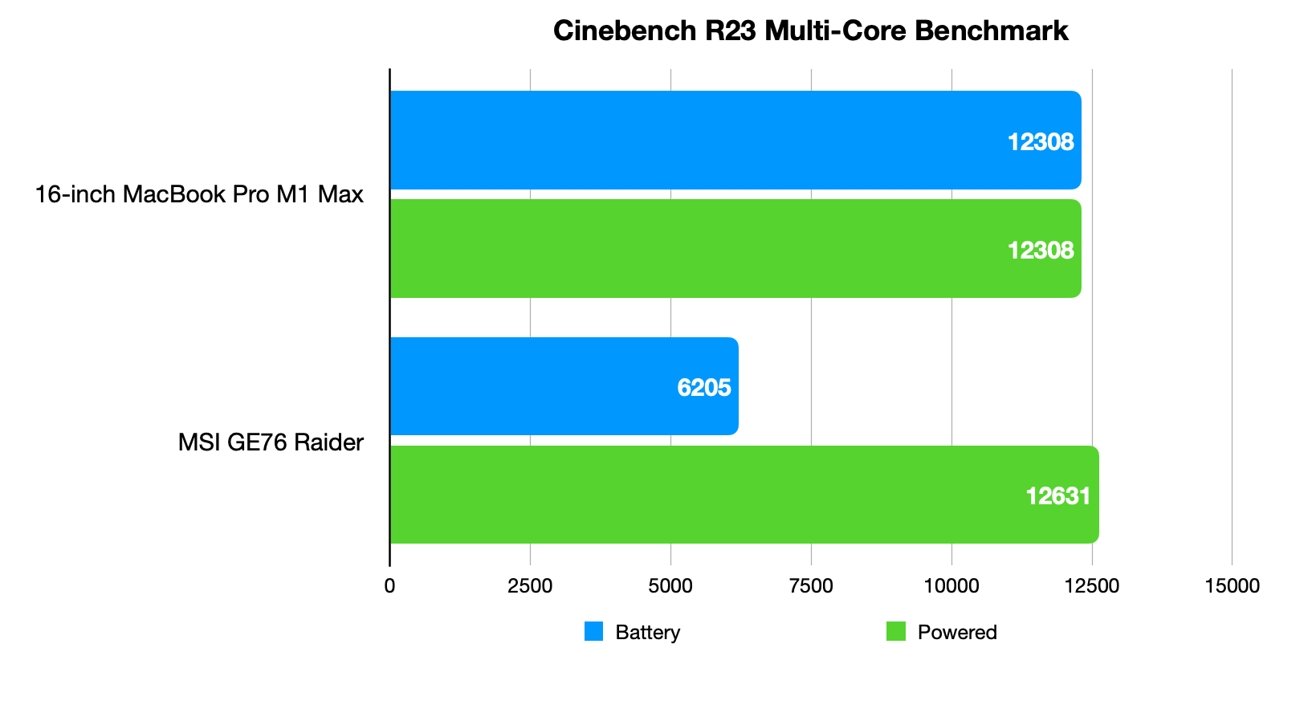 The Raider narrowly wins in Cinebench's multi-core test, but falls far behind when using the battery.
The Raider narrowly wins in Cinebench's multi-core test, but falls far behind when using the battery. Under Cinebench, the performance competition leans towards MSI, but only just, and certainly only when connected to a power source. On battery, Apple is still a clear winner.
16-inch MacBook Pro vs MSI GE76 Raider - Graphics Performance
Apple's reason for buying the Raider was for its graphics comparison, and for good reason. Inside the selected model is an Nvidia GeForce RTX 3080 with 16GB of DDR6 VRAM. This is the same GPU used in the Razer Blade 15 Advanced that Apple also compared the Max against during launch.
Specifically, Apple said the M1 Max could offer "similar graphics performance" as the "high-end PC laptop graphics" in the Raider but consumes 100W less power in the process.
Along with the discrete GPU, the Raider has Intel UHD Graphics as a low-power integrated option.
The M1 Pro in the 16-inch MacBook Pro has a 16-core Apple-designed integrated GPU, with no discrete GPU. The M1 Max is available with a 24-core GPU or 32-core GPU, similarly as integrated graphics.
As Apple relies on a Unified Memory structure, where the various sections of the system-on-chip have access to the same memory pool to minimize duplication, the GPU has access to the same amount of memory as the CPU for its tasks.
In effect, the M1 Max GPU can have up to 64GB of memory at its disposal. While it's not private to the GPU, like in the Raider, the sheer amount available is advantageous to the MacBook Pro.
When AppleInsider benchmarked the 32-core M1 Max, it managed a Geekbench OpenCL score of 68,950, which is very respectable. Meanwhile, the Raider manages to get 93,617 on battery and 133,223 when powered, almost double Apple's score.
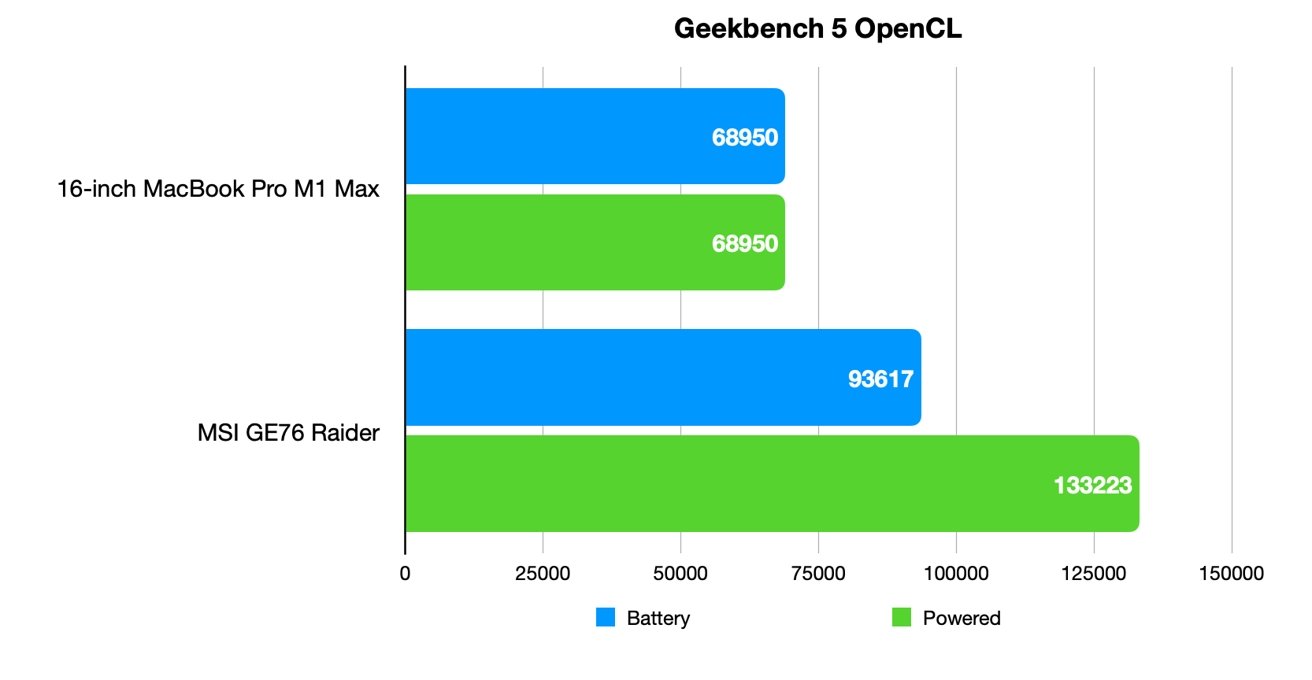 Geekbench 5's OpenCL test indicates the M1 Max 32-core GPU works well, but not quite enough to beat the Raider.
Geekbench 5's OpenCL test indicates the M1 Max 32-core GPU works well, but not quite enough to beat the Raider. This isn't a good look for the M1 Max in this case, especially when put against Apple's "similar graphics performance" claim. However, bear in mind that this is just one benchmark, and as seen with the CPU testing, there can be variance between testing tools.
We ultimately don't know what tools Apple used to test graphical performance to develop its marketing message, but it found something that allowed it to confidently make such a claim.
This also doesn't take away the punch of the second half of Apple's claim relating to lower power usage. After all, what good is all of that performance if you can't use it for that long on a battery?
16-inch MacBook Pro vs MSI GE76 Raider - Storage, Connectivity, Power
The 16-inch MacBook Pro starts with 512GB of SSD storage at the lowest, rising to 1TB, 2TB, 4TB, and 8TB at the maximum. MSI includes 1TB of NVMe SSD storage in the Raider, however, its use of two M.2 slots means more could be added after purchase.
In terms of connectivity, Apple made the MacBook Pro easier for professionals to use immediately without dongles. In the latest iteration, there are three Thunderbolt 4 ports, HDMI, an SDXC card slot, and a headphone jack, along with MagSafe 3 for power.
The MSI GE76 Raider, like other gaming notebooks, tries to provide as many connection options as possible to users. The lengthy ports list includes one Thunderbolt 4, one USB 3.2 Gen 2 Type-C, one USB 3.2 Gen 2 Type-A, two USB 3.2 Gen 1 Type-A, HDMI, mini DisplayPort 1.4, an SDXC card slot, Ethernet, and a headphone jack.
On the networking side, the MacBook Pro relies on Wi-Fi 6, along with Bluetooth 5.0. As well as 2.5 Gigabit Ethernet, there's Wi-Fi 6E support and Bluetooth 5.2 in the Raider, giving it an edge, but only if you have a Wi-Fi network compatible with 6E.
It is a practically even match on the battery, with the MacBook Pro having a 100WHr battery against the Raider's 99.9WHr unit. Apple claims the battery life extends to 21 hours of Apple TV playback or 14 hours of wireless web surfing.
Gaming notebooks aren't known for having a long battery life, and it's telling that MSI doesn't offer a time estimate for the notebook. It appears that the consensus is that it runs to around 5 to 6 hours at best, 3 hours at worst, though there's a lot of variance in testing methodologies at play.
Getting power back into the notebook is another matter, with MSI using a 280W charger, while Apple uses a 140W version. You can use both MagSafe and Thunderbolt to recharge the MacBook, making it a great option for single-cable connections to a dock with sufficient power delivery.
You can't recharge the MSI using power delivery, as you must use the dedicated power connection. It does at least offer power delivery out to connected small devices.
16-inch MacBook Pro vs MSI GE76 Raider - Audio, Camera, keyboard and Other Details
Apple employs a "high-fidelity six-speaker sound system" with force-canceling woofers, supporting Spatial Audio with Dolby Atmos. The Raider uses a pair of Dynaudio 2-watt speakers, along with a couple of 1-watt woofers.
The MacBook Pro uses a "studio-quality three-mic array" with a high signal-to-noise ratio and directional beamforming. MSI uses a single mic located next to the webcam.
Both have 3.5mm headphone jacks, but Apple also includes advanced support for high-impedance headphones in its version.
Both also have a 1080p webcam, with the MacBook Pro's FaceTime HD camera taking advantage of the advanced image signal processor with computational video to process anything it captures.
The MacBook Pro uses a backlit 78-key Magic Keyboard with 12 full-height function keys and Touch ID in the top-right corner. MSI uses a 102-key with SteelSeries Engine 3, providing it with per-key RGB backlighting as well as anti-ghosting technology.
While the MacBook Pro offers Touch ID as biometric security, there's no such option for the Raider.
16-inch MacBook Pro vs MSI GE76 Raider - Upgradability
One thing that certainly lies in MSI's favor is that it is somewhat upgradable. A user can access the memory and the storage slots inside the GE76 Raider and add, remove, or replace what's there with something else.
While both memory slots are occupied with a pair of 16GB sticks, they could be switched out for two 32GB ones, bringing the total memory up to 64GB.
On the storage side, there are two M.2 ports, and one is occupied with a 1TB NVMe SSD. You could add another drive to the unoccupied slot, and equally, pull out the existing drive and insert a larger capacity option instead.
This is not an option at all for the 16-inch MacBook Pro. You're stuck with what you've got at the time of purchase, making selecting the initial configuration quite important.
If you did want to upgrade, you could feasibly take advantage of Thunderbolt 4 to have fast external storage, but that's a Band-Aid fix to the problem. Otherwise, you're looking at getting a whole new MacBook Pro with the specifications you want and selling or trading in your old one.
16-inch MacBook Pro vs MSI GE76 Raider - Configuration Pricing
The MSI GE76 Raider in Apple's selected configuration costs $3,399.
Apple's 16-inch MacBook Pro starts at the base level with the M1 Pro, 16GB of memory, and 512GB of storage for $2,499. Bumping the memory up costs $400 on top.
The storage upgrade from 512GB to 1TB costs $200, while going to 2TB is $600, 4TB is $1,200, and 8TB at the highest is $2,400.
The lowest-priced M1 Max with a 24-core GPU, 32GB of memory, and 512GB of storage is $3,099. Upgrading the memory to 64GB is $400, while it's an extra $200 to get the 32-core GPU, and storage upgrade costs are the same as the M1 Pro.
For a comparative specification MacBook Pro, with the 32-core GPU M1 Max, 32GB of memory, and 1TB of storage, you would have to pay $3,499, $100 more than the MSI.
MacBook Pros continue to outclass gaming notebooks
Apple's decision to use the MSI GE76 Raider to compare high-performance graphics in notebooks is a good one. It chose one of the best GPUs on the block, and it happened to be inside the Raider in this instance.
However, going against a heavyweight GPU has its risks, and at least in our benchmark, it seemed that the MacBook Pro was a little too underperforming to be close. Don't count this as saying it's slow, as it's undoubtedly very good performance-wise, but in this particular test, it wasn't quite good enough.
Of course, graphical performance isn't everything, as in most other areas, the 16-inch MacBook Pro does far better. Everything from the design and the display to internal performance when on battery.
Where MSI does better is in much smaller stuff, such as the variety of ports available and the ability to change the memory and storage after purchasing. This lack of upgradability certainly harms Apple's image, but it's a long-term problem that we have lived with, and will probably continue to do so for quite a while.
The MSI GE76 Raider is a great gaming notebook in its own right. It's certainly more a desktop replacement than a portable workstation, and opting for a model with a 4K-resolution display may be a better choice, but it's still a decent effort from MSI.
For effectively $100 more for the 32-core GPU, same memory, and comparable storage, the 16-inch MacBook Pro is simply a better option. Especially for those who don't want to be tied to a power outlet.
Where to buy
Apple's 2021 16-inch MacBook Pro is on sale now, with exclusive coupon savings at your fingertips in the AppleInsider 2021 16-inch MacBook Pro Price Guide.
At press time, the best MacBook Pro deals offer triple-digit savings on both retail and configure-to-order (CTO) models at Apple Authorized Reseller Adorama with promo code APINSIDER and this activation link. Step-by-step instructions detailing how to redeem the coupon can be found here.
The MSI GE76 laptop, meanwhile, can be ordered at Amazon for $3,399.
 Malcolm Owen
Malcolm Owen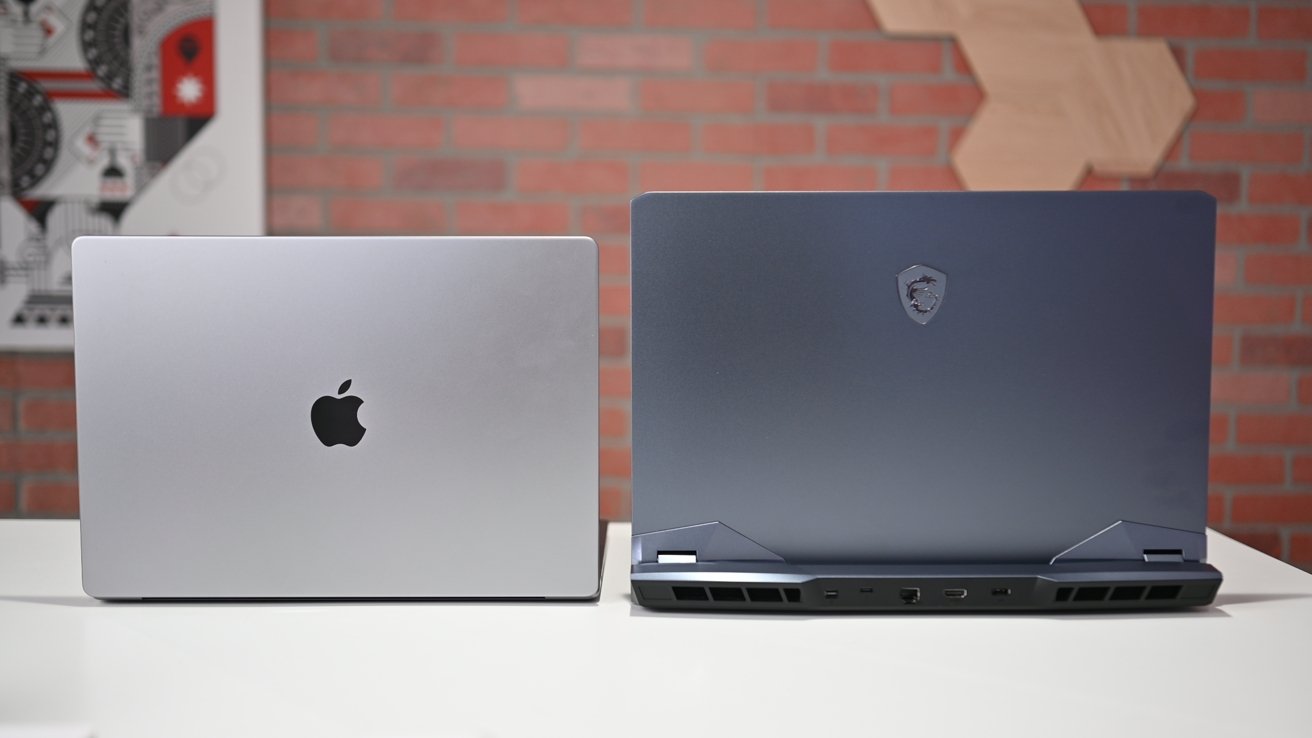
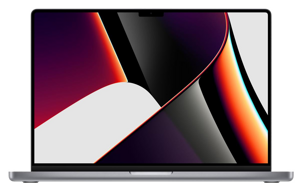
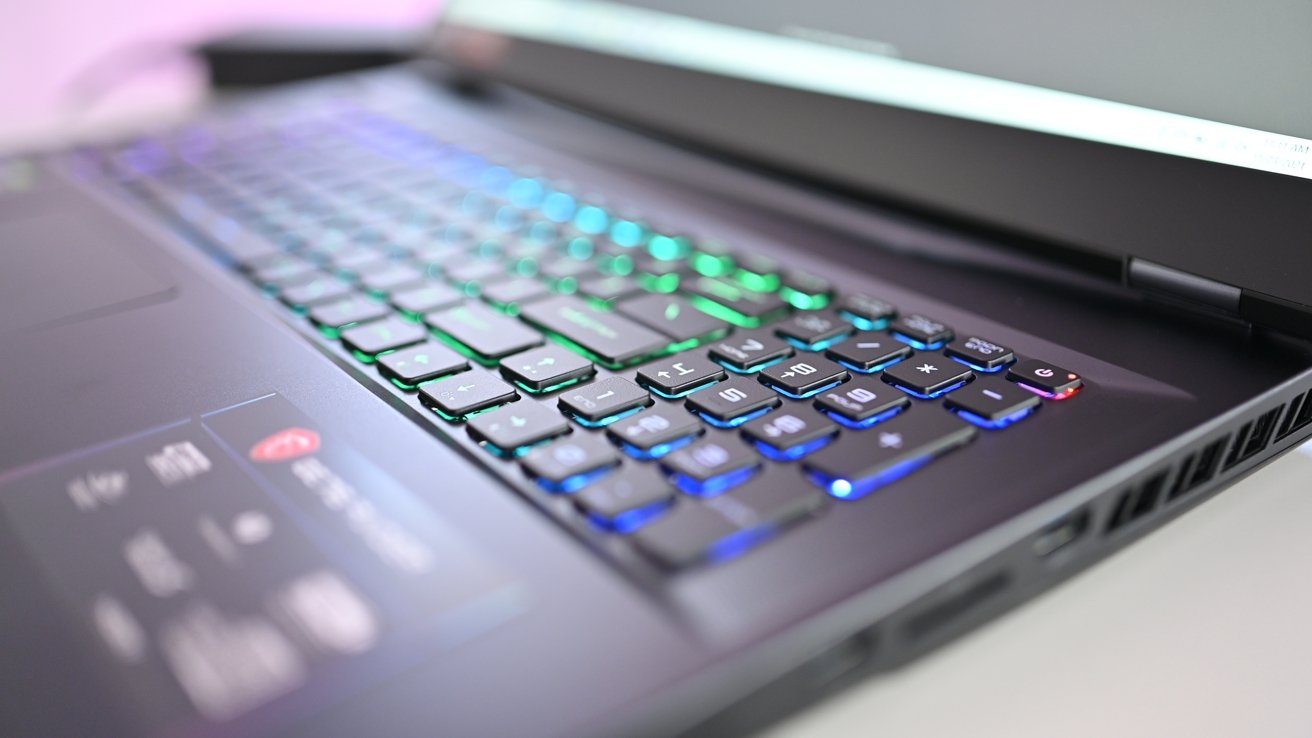
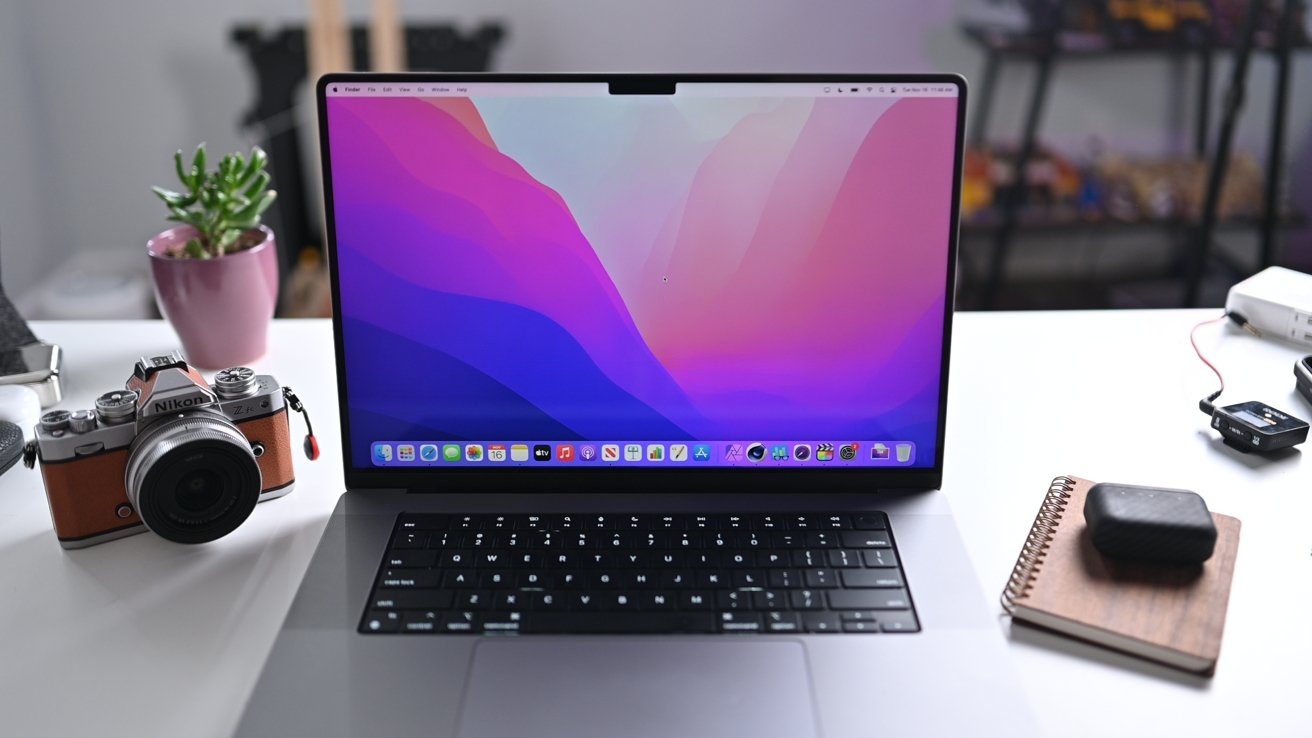
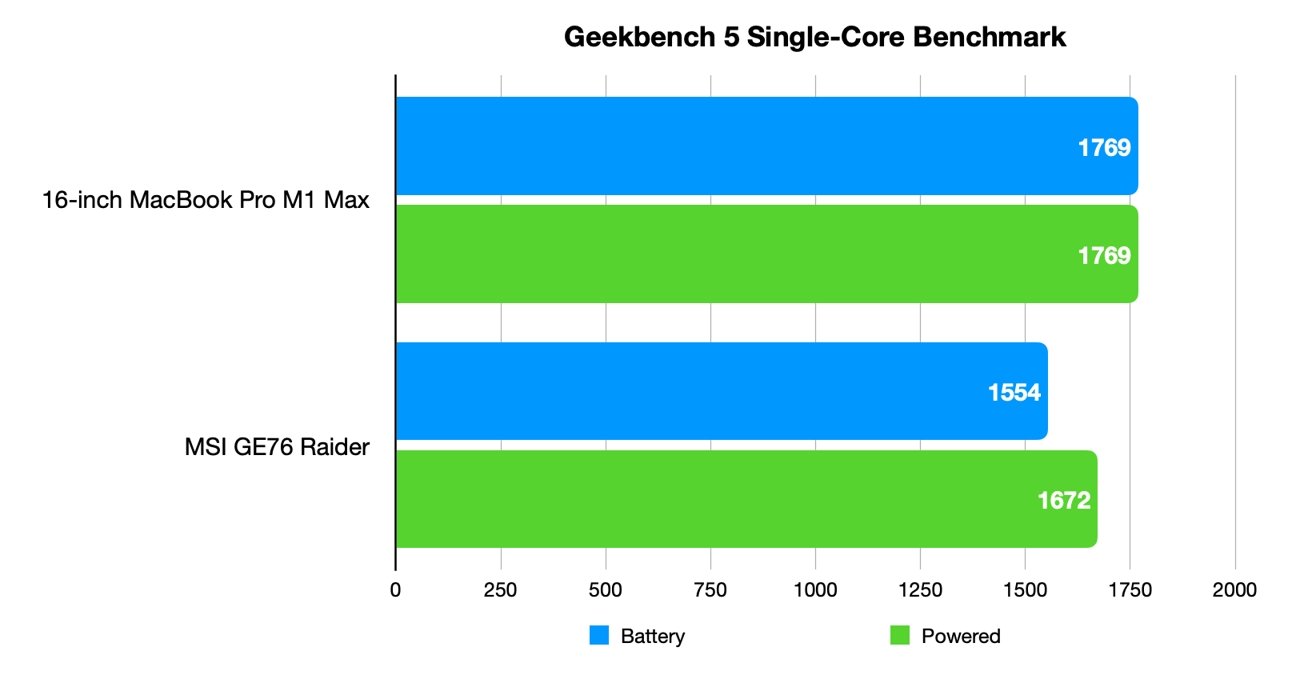
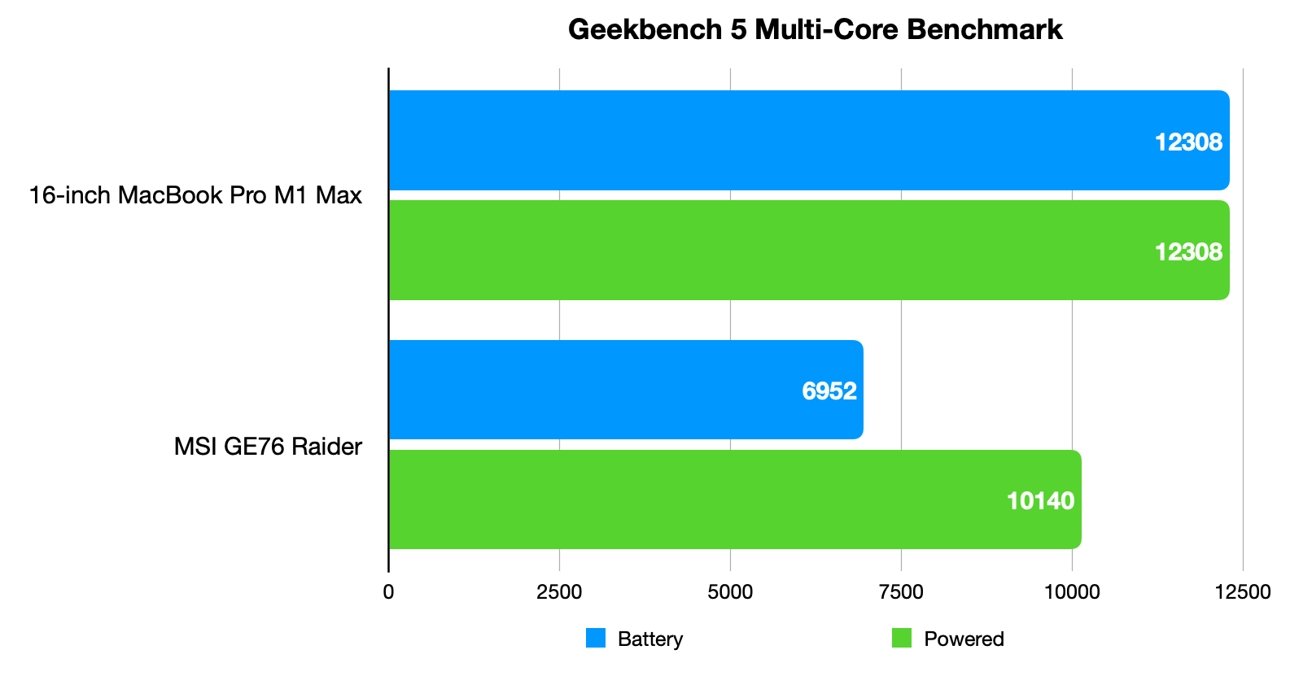

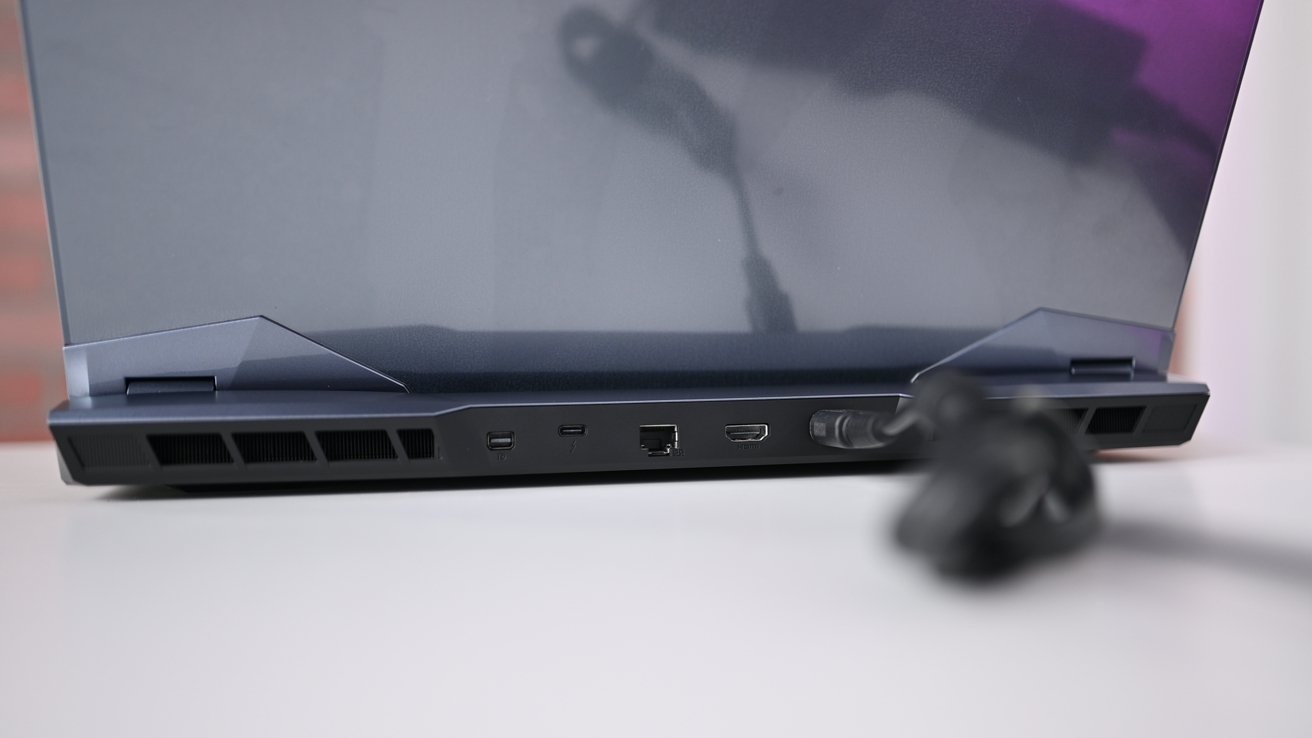
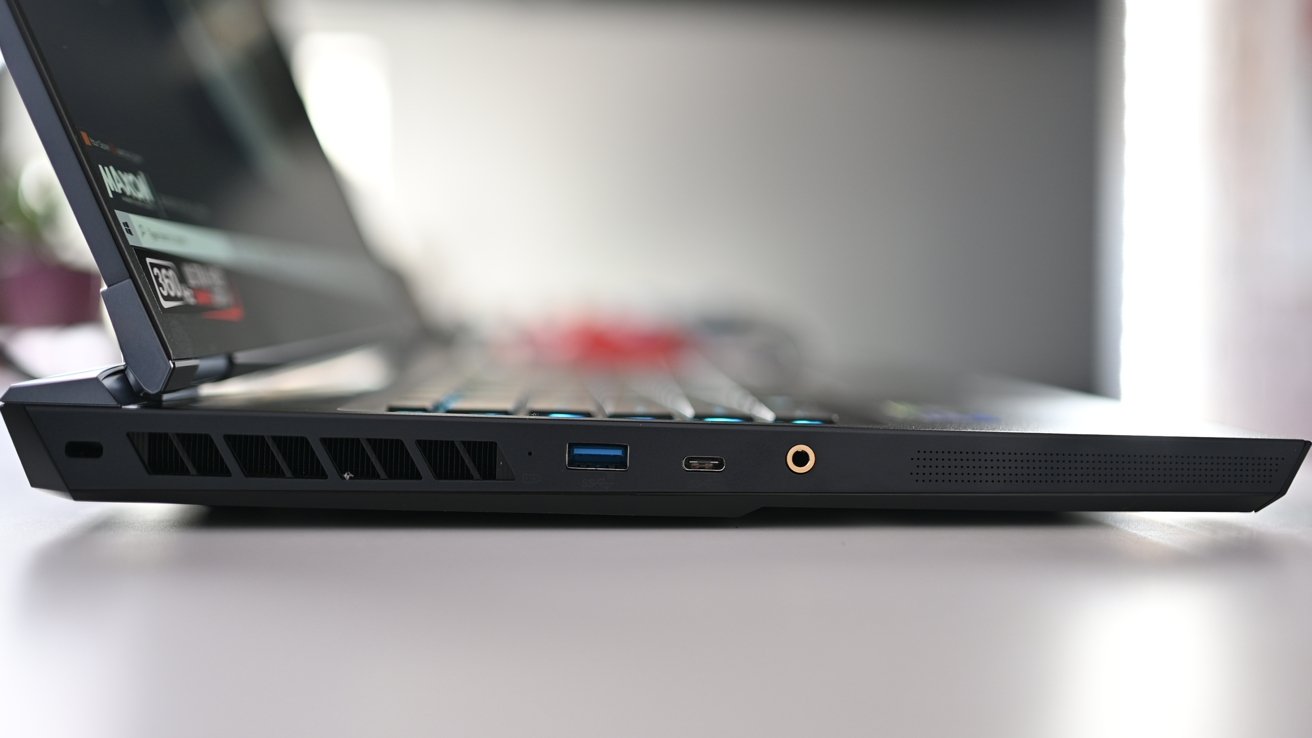
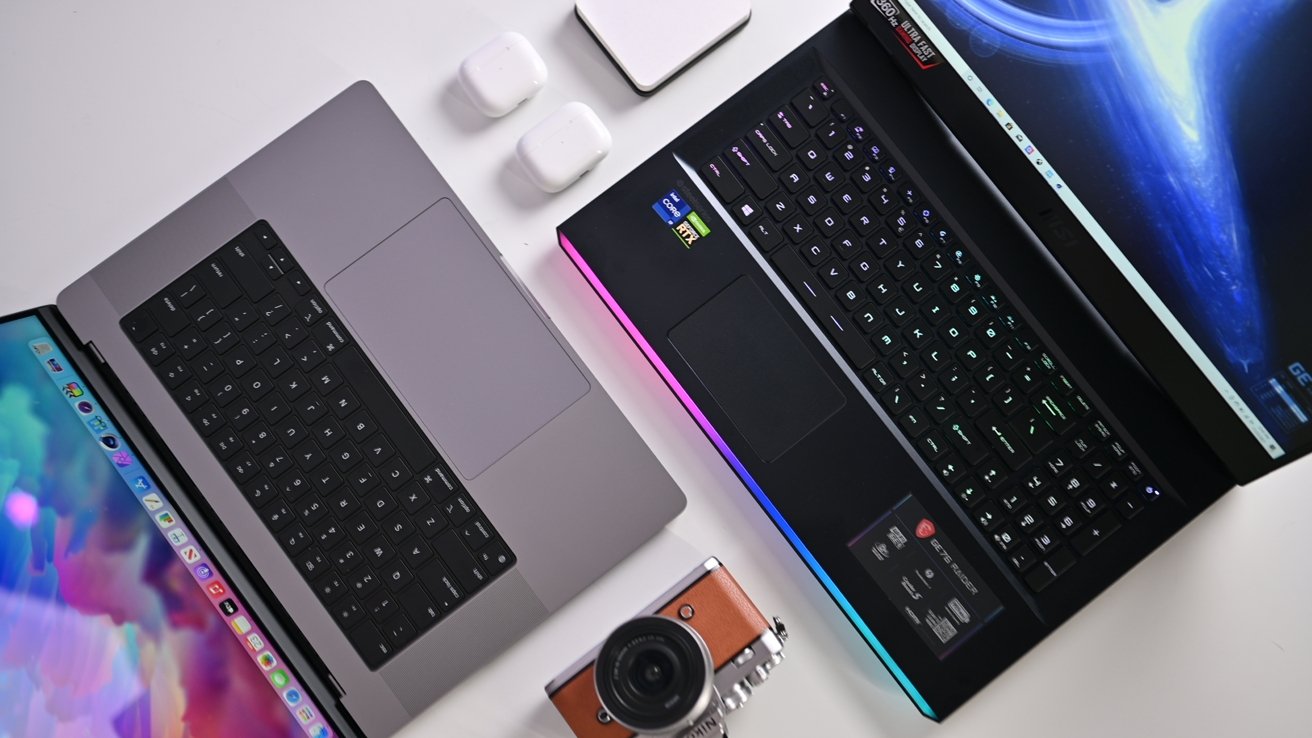
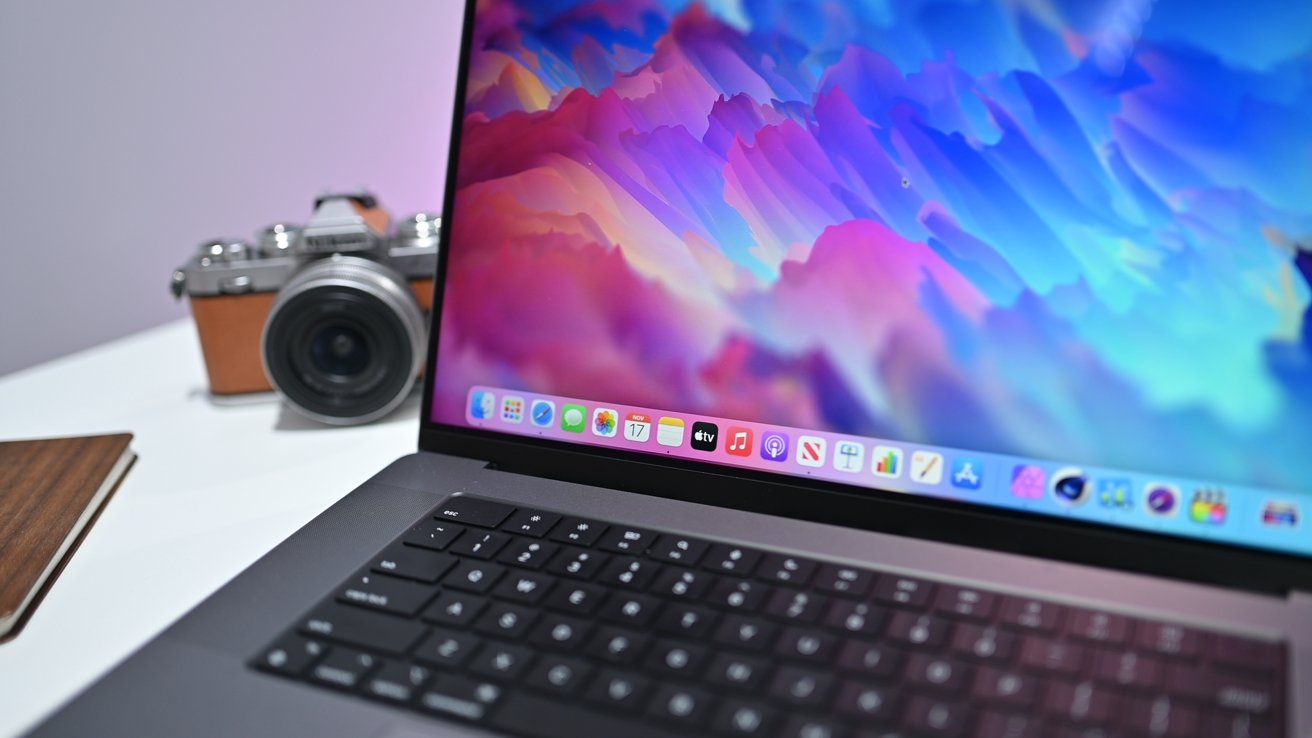







-m.jpg)






 Charles Martin
Charles Martin
 Christine McKee
Christine McKee
 Wesley Hilliard
Wesley Hilliard

 Andrew Orr
Andrew Orr
 William Gallagher
William Gallagher
 Sponsored Content
Sponsored Content







18 Comments
Pretty devastating, the Max is almost half the GPU performance against the Nvidia GeForce RTX 3080 on the Geekbench 5 OpenCL test. The whitewashed spin here by AppleInsider is inappropriate.
This Black Friday there were some 17" laptops with RTX 3070 GPUs on sale for around $1400 that could run rings around any MacBook Pro when it comes to ray tracing. In addition they can run vastly more and better games than the MacBook Pro. However the Mac Book Pro can run rings around any Windows laptop when it is running on battery and can do so for many hours.
The MSI seems like a decent enough gaming laptop for use in dimly lighted and darkened spaces. 300 nits of brightness and 1080p screen would be totally inappropriate for a lot of productivity applications. I could get by comfortably using the Mac without an external monitor in many scenarios, but the MSI would be a struggle.